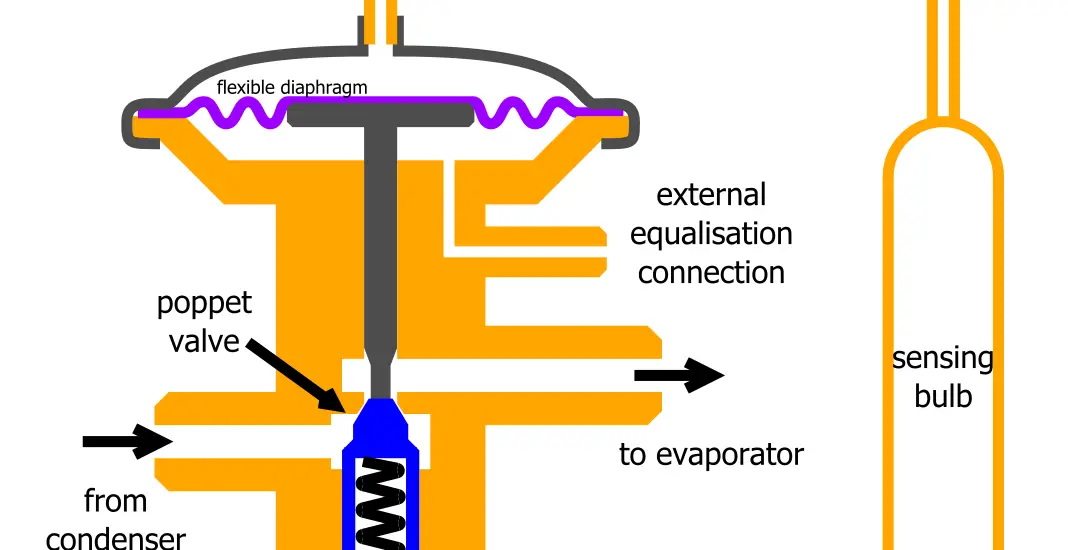Are you looking to perform a Danfoss TXV superheat adjustment but unsure where to start? Worry not. In this detailed guide, we are breaking down every facet of the process to not only guide you step-by-step but also give you a fundamental understanding of why each step is crucial.

Table of Contents
Preparation for Danfoss TXV Superheat Adjustment
Proper preparation paves the way for a smooth Danfoss TXV superheat adjustment process. Here is what you need to prepare:
Tools: Gather a precision thermometer, a pressure gauge, and an adjustable wrench. Ensure they are in good condition to get accurate readings.
Check out the Kamtop Dual Channel Thermometer, Digital HVAC Manifold Gauge Set, and WORKPRO 2-piece Adjustable Wrench Set on Amazon.
Manual: Having the Danfoss manual nearby is vital. It contains specific details about the suitable superheat settings for your system.
Safety: Remember to put on safety gloves and glasses to protect yourself during the adjustment process.
Step-by-step Guide to Danfoss TXV Superheat Adjustment
The steps below will guide you on how to perform a Danfoss TXV superheat adjustment:
Shutdown
Before you begin, it is paramount to shut down the HVAC system to prevent any accidents and to stabilize the system for precise measurements.
Turning off the system allows the pressures and temperatures to stabilize, offering you a safe environment to work.
Ensure the system is off for at least 30 minutes to achieve a stable state.
Connection
The next step involves setting up your tools for accurate measurements.
Connect the pressure gauge to the suction line; this line is generally located near the compressor unit and is larger than the liquid line.
Secure the thermometer at the outlet of the evaporator, which is typically found in the indoor part of your HVAC system.
Ensuring proper tool placement will facilitate accurate readings, which is vital for the successful adjustment of superheat.
Current Values
Once the tools are correctly set up, record the current superheat value. It will serve as a reference point, helping you to understand the degree of adjustment needed.
Measure the superheat by noting down the pressure reading from the gauge and then converting it to temperature using a PT chart.
Subsequently, subtract the suction line temperature (noted from the thermometer) from this value to get the current superheat value.
Manual Consultation
After noting down the current superheat value, refer to the Danfoss manual to find the recommended superheat settings for your particular system.
It is imperative to follow the manufacturer’s guidelines to ensure the optimal performance of your HVAC system post-adjustment.
You’d find the manual either as a physical copy that came with the device or online on the official Danfoss website.
Adjustment
With the recommended superheat value from the manual in hand, proceed to make the adjustments on the TXV.
Locate the adjustment stem on the TXV; it’s a small protruding screw-like part usually found on the bottom or side of the valve.
Use an adjustable wrench to turn the stem; a clockwise turn will increase the superheat while a counterclockwise turn decreases it.
Make small, incremental adjustments to maintain control over the changes and prevent drastic fluctuations in the superheat levels.
Monitoring
After making initial adjustments, observe the changes through the pressure gauge and thermometer.
Allow the system to run for a few minutes and stabilize before taking new readings.
Repeat the process of calculating the superheat as described in step 3 to understand the new superheat value.
Keep a watchful eye to ensure the adjustments are moving towards the desired value, and make further fine-tuned adjustments if necessary.
Securing
Once the desired superheat level is achieved, ensure to secure the adjustment stem to maintain the setting.
This step involves tightening the stem firmly but without applying excessive force to prevent any damage to the TXV.
Reactivation
With the adjustments complete, it’s time to restart the HVAC system.
Turn it on and let it run for a considerable time to assess its performance.
Observe the system over a period to ensure that the adjustments have yielded the desired results and that the system operates at the optimal superheat level consistently.
Through this detailed guide, even a novice can understand and perform a Danfoss TXV superheat adjustment successfully. Remember to always take safety precautions and consult a professional if in doubt.
Check out these other related articles…
How Does Thermal Expansion Work: A Comprehensive 411 Guide
TXV Valve vs Piston: A Comprehensive Comparison
When to Replace Expansion Valve: 3 Telltale Signs
Pressure Control and Expansion Valve: A Complete Guide
TXV vs Expansion Valve: A Comprehensive Comparison
Troubleshooting Common Issues
Even with a well-laid plan, you might encounter some hitches.
Common issues include fluctuating superheat values and strange noises from the TXV.
It’s important to refer to the Danfoss troubleshooting guide in such situations.
Take a calm approach, and methodically follow the solutions offered in the guide to solve any issues.